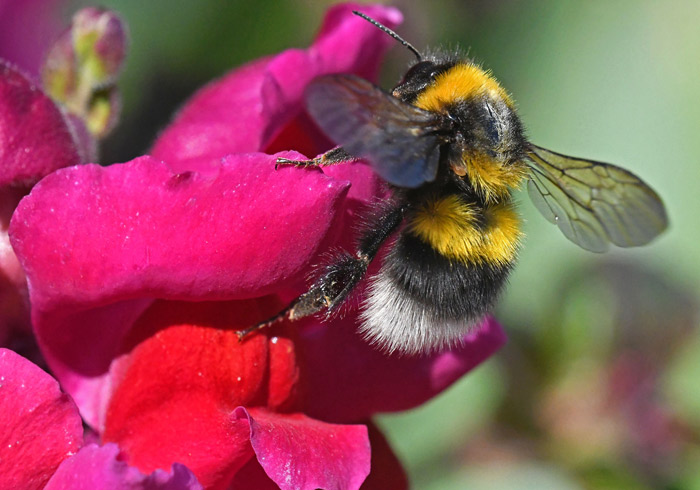Users
Social media
- More details here...
- Address
Parc Científic de la Universitat de València C/
Catedrático Agustín Escardino, 9
46980 Paterna (Valencia) Spain - Email:
iu.i2sysbio@uv.es - Phone:
(+34) 963544810
- Address
Links
The “Human Frontiers” Scientific Program supports research on interactions between plants and pollinators with the participation of I2SysBio

Investigation & Education
The “Human Frontiers” Scientific Program supports research on interactions between plants and pollinators with the participation of I2SysBio

The I2SysBio Metabolism Transcriptional Orchestration Laboratory directed by J. Tomás Matus is part of the multidisciplinary project “Good Vibes” that will be funded by the “Human Frontiers” Scientific Program and will focus on how plants interact with their pollinators.
The objective of "Good Vibes" is to dissect the molecular mechanisms and physiological responses of plants to the different vibroacoustic signals (VAs) emitted by insects that approach them, using Antirrhinum (snapdragon) as a model. Since visitors to Antirrhinum flowers have uneven effectiveness as pollinators and emit characteristic VAs, it is assumed that plants are able to recognize effective pollinators by detecting their specific VAs. The scientists participating in this project also postulate that the AV responses produced in the snapdragon affect the behavior of pollinators, with effects on pollen transfer and, consequently, on the reproductive fitness of the plant. “Good Vibes” will test these hypotheses through a multidisciplinary approach that combines ethology, plant molecular biology and physics. Specifically, the project addresses the following fundamental questions: how do plants react to VAs emitted by insects that visit flowers? Have plants evolved different flower shapes and material properties to enhance the propagation of AV signals? Why has VA communication evolved in plants?
Three units will participate in the project: The insect behavior unit, directed by Francesca Barbero (University of Turin, Italy), the engineering and modeling unit, directed by Sebastian Oberst (University of Technology Sydney, Australia), and the plant physiology unit, directed by J. Tomás Matus, researcher of the Ramón y Cajal Program (University of Valencia) in the I2SysBio (UV-CSIC joint center). The team led by Tomás Matus will characterize the molecular and physiological mechanisms of plant responses to the different VAs emitted by flower visitors, evaluating differences in plant sensitivity, perception thresholds and the detection of frequency ranges or temporal components. Genes related to flower shape and signal transduction/sensing receptors will be edited using CRISPR-Cas and tested to analyze AV sensing processes and structural features that have potentially evolved to enhance AV transmission in plants. This project aims to go beyond the boundaries of knowledge by addressing the complex dynamics of plant-pollinator systems from a totally new angle. According to Tomás Matus: "We strive to revolutionize our understanding of how plants interact with their environment through finely tuned communication."
The International Human Frontiers Foundation Science Program Organization (HFSPO) has announced some $37 million to support the top 4% of HFSP research grant applicants over the next 3 years. The 32 winning teams of the 2022 research grant competition went through a rigorous, year-long selection process in a global competition that began with 716 letters of intent submitted involving scientists in more than 50 different countries. This year, 7 early career scholarships and 25 research projects were selected for funding. Each team member receives an average of $110,000 to $125,000 per year.
Images:




